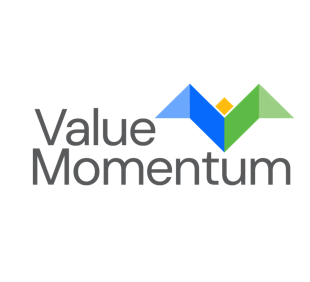Data and analytics play a pivotal role in helping insurers streamline their processes, personalize their customer experiences, and make better business decisions. Modern data platforms like those provided by Databricks and Snowflake can help insurers make sure they are deriving valuable insights from the mountains of data contained within their core systems in an efficient manner.
Our data and analytics teams recently attended both Databricks’ and Snowflake’s conferences to learn about innovations in the world of data and analytics and to find out what’s next for these top-of-the-line data platforms. On top of conference sessions, ValueMomentum team members were pleased to gather with partners and customers at our happy hours at each conference.

What’s Next for Data and Analytics in Insurance?
Both Databricks and Snowflake debuted impressive new features for their products at their respective conferences.
For example, Databricks introduced a serverless offering, providing a fully Software-as-a-Service (SaaS) product. This new feature allows seamless integration across multiple programming languages, offering insurers enhanced flexibility and scalability in their data and analytics development processes. The company also noted that it has brought in artificial intelligence (AI) features to assist with accelerating the implementation process. As AI adoption grows, Databricks has implemented guardrails to ensure controlled and reliable AI outputs.

Snowflake, on the other hand, shared new offerings in four key areas: data engineering, analyst and developer tooling, data governance and security, and enterprise AI and machine learning. However, one announcement stood out to the ValueMomentum team. Snowflake Data Cloud has been renamed to Snowflake AI Data Cloud, reflecting the company’s declaration that it has moved into its AI era.
While each data platform provider had different innovations to share with conference attendees, common themes emerged across both gatherings. Like other industries, data and analytics providers are adapting their products to incorporate new technologies, prioritize efficiency, and improve the quality and consistency of data being leveraged.
Here are some of the key themes that emerged for the future of data and analytics in insurance across both conferences.
1. Investment in Advanced AI and Analytics Tools
As with other industries, AI, generative AI, and large language models (LLMs) are increasingly being incorporated into modern data platforms. Solution providers are finding ways to speed up their current processes and streamline operations using these more advanced forms of AI.
For instance, LLMs can be deployed as agents to automate more complex tasks, improve decision-making, and personalize experiences for customers. AI and machine learning tools are being leveraged to conduct more advanced data analysis and automate portions of the policy processing and customer service life cycle. AI can help automate the way data is extracted from policy documents and processed, reducing the manual effort involved as well as lowering the risk of human error.
Advanced AI and machine learning capabilities are also being applied to risk assessment processes and detecting fraud. Applying advanced analytics tools in these areas helps insurers better predict and manage potential risks as well as identify fraudulent activity through patterns and anomalies present in their data.
2. Streamlined Data Operations
Data platform providers are seeking ways to improve their operational efficiency and to unify multiple data sources into a single catalog. Consolidating multiple data sources offers users of these platforms streamlined data access and management. Both platform providers also highlighted their efforts to streamline their data processing pipelines, including by integrating transactional and analytical data workflows.
Improving data operational efficiency can help allow for real-time data insights, making the platforms more responsive and improving users’ ability to make decisions. Both Snowflake and Databricks highlighted features of their platforms focused on these efforts. Databricks’ Unity Catalog, for example, helps users bring various data sources together, while Snowflake’s Unistore assists with the integration of both analytical and transactional data workflows.
Improved accessibility and search capabilities were also top of mind. Organizations are seeking tools that can help them quickly find and analyze relevant data from across their enterprise. Better accessibility to information from across departments and systems can help enhance both collaboration across the organization and data-driven decision-making.
3. Improved Data Quality and Governance
Data and analytics platform providers are prioritizing the quality of their data as well as improving features for governance and reporting. On top of discussions for best practices and tools to ensure data remains accurate and consistent, these companies are building out scalable frameworks for data governance.
At the Databricks conference, the topic of open-source Delta Sharing also emerged, which would enable secure data sharing across platforms and organizations.
Compliance and reporting are major concerns for insurance organizations, and data and analytics platforms providers are taking these factors into consideration for customers in highly regulated industries. Improved data lineage and governance features can help insurers maintain compliance efficiently, while better auditing capabilities can help track how data is flowing and being used across an enterprise. In addition, regulatory reporting features can help facilitate accurate and timely reporting to governing regulatory bodies to reduce the risk of organizations incurring any penalties for non-compliance.
The importance of data and analytics in insurance is nothing new. Modern data platforms can help insurers be certain they’re getting the most actionable insights possible from the information contained within their core systems. The recent Databricks and Snowflake conferences provided the ValueMomentum data and analytics teams with opportunities to learn about and discuss changes in the world of modern data platforms with clients, partners, and peers alike.
To learn more about how to gain the most business value from data capabilities, read our whitepaper Driving Business Value With Insurance Data Analytics.

